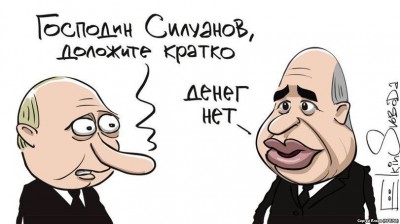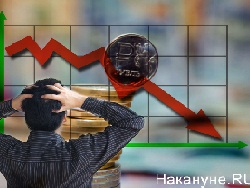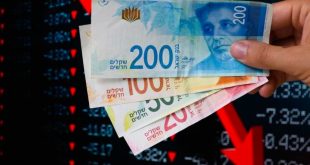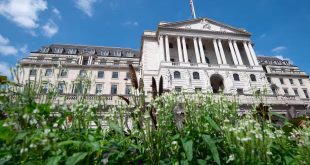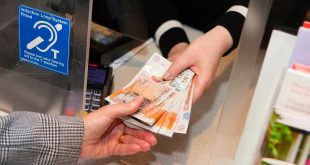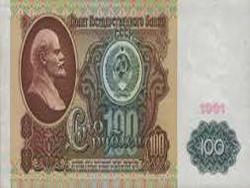
Confiscatory monetary reform was conducted in early 1991, the Prime Minister of the USSR Valentin Sergeyevich Pavlov with the support of Soviet President Mikhail Gorbachev by withdrawing from circulation the large denominations of banknotes.
On January 22, 1991 in the evening news programs of the Central television “Time” was read the Decree of the President of the USSR “About the discontinuation of the payment of banknotes of the state Bank of the USSR value of 50 and 100 roubles of the sample 1961 and the restriction of cash money from deposits”. The President of the USSR, in particular, has declared: “on the termination with 0 hours on January 23, 1991 for admission to all types of payments banknotes of the state Bank of the USSR value of 50 and 100 roubles of the sample 1961 and exchange them for banknotes of other advantages of the banknote and the 50 – and 100-ruble dignity sample of 1991 in the order determined by the Cabinet of Ministers of the USSR” and “on introduction of restrictions in the first half of 1991, with effect from 23 January 1991 cash advance with deposits of citizens in establishments of the savings Bank and all other banks with a maximum amount of 500 rubles per month”. For exchange of old notes was allotted only three days, from 23 to 25 January 1991. Were permitted to exchange no more than 1000 rubles per person.
On the same day, 22 January 1991, published the Decree of the Presidium of the Supreme Soviet of the USSR “About the next measures to implement approved by the Supreme Soviet of the USSR of the basic directions of stabilization of national economy and transition to a market economy”. In this document were approved by the President of the USSR and Cabinet of Ministers of the USSR aimed at the stabilization of monetary circulation, since they are, in the opinion of the Presidium of the CPSU Central Committee, are “a critical part of the implementation of” Main directions of the stabilization of national economy and transition to a market economy. In the text of the Main directions at the time the reservation was made, to explain the official meaning of monetary reform: “the fact that the national economy <…> began the process to boost growth (while the grain and meat) and wholesale prices and also prices of some goods in some republics and regions. This became the impetus to inflation, which is spreading to the retail price. In these circumstances it is necessary to contain inflation, primarily, at retail prices. During this time, < … > to carry out measures to improve monetary and financial system and on this basis to continue the transition to market prices”.
As reported already, on 28 January 1991 the Chairman of the Board of the State Bank of the USSR Viktor Gerashchenko, as a result of monetary reform, in branch of the state Bank of the USSR entered the 50 – and 100-ruble banknotes for the sum about 40 billion rubles, and only by this time in circulation were those of denominations in the amount of 48,199 billion. As for the 50 – and 100-ruble notes abroad, their volume did not exceed 0.5 billion. Thus, from trafficking were seized about 8 billion rubles, while the unsatisfied effective demand only in the RSFSR, according to the Chairman of the RSFSR Council of Ministers I. S. Silaeva, exceeded 128 billion.
I. D. B. P. has proposed in 1994 an original explanation of “Pavlov’s” monetary reform based on the idea of expanding arbitrage opportunities on the Russian currency market. He, in particular, wrote: “on January 23, Pavlov spent the forfeiture of the 50 – and 100-ruble notes. One of the reasons this measure was the following. In 1990 nauseosa on bribes and embezzlement of state property, officials and farm workers to exchange saved them millions roubles through Vnesheconombank in Hungarian forints and Polish zlotys. The fact that the operation ruble Forint – dollar and ruble – zloty – dollar would bring much greater revenue than the operation of the rouble – dollar, rouble, because the Forint and the zloty against the dollar was artificially low. Vnesheconombank instantly surrounded racketeers. However, the Soviet underground millionaires legal and preferred silence to pay for passage to the Bank the fees established in 10 thousand roubles, than to go to the corrupt authorities of policing. In the Bank they paid 2 thousand [rubles] to the cashier. The Forint and zloty were then converted to dollars. Every dollar on the Hungarian line were treated to millionaire in 3 RUB and Polish the channel is 7 rubles, it is Unknown how the number of large ruble notes was, thus, abroad; in any case, Pavlov gave a figure of 100 billion rubles”.
On 1 March 1991 in accordance with the law of the USSR was allowed the free circulation of currency. On the first official auction in the Center of interbank currency transactions of the state Bank of the USSR in April 1991 had fixed the rate at 26 rubles for 1 US dollar that was close to the rate of the illegal currency market at 30-31 rouble per 1 US dollar. Thus, the most likely targets of monetary reform, especially in the shortage of international reserves of the USSR, was the task of stabilizing the foreign exchange market and the suppression of established mechanisms of withdrawal of monetary funds abroad. Moreover, savings are rapidly diminishing foreign exchange reserves has acted, apparently, the main cause of “Pavlov’s” monetary reform. The same P. thus writes about it: “Along with domestic inflation on the depreciation of the ruble worked widespread barter transactions with foreign companies, due to which foreign trade was done without the ruble. Operated and specific causes. So, in June 1991, the USSR Ministry of Finance has imposed 35% tax on the ruble proceeds from the sale of foreign currency on currency trading, thus forcing the sellers to raise the price of the dollar to shift losses to customers. In the same month, the state Bank [of Soviet Union] forced began to withdraw from the auction bid on the currency that is used to buy electronics, cars and food. It also stimulated the rise of prices of currencies in order to reduce impact of “cheap” customers.”



